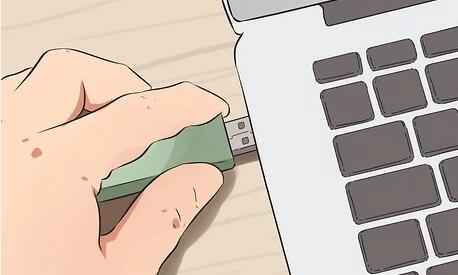It sounds like you’re dealing with a USB disk that’s write protected and you’re trying to format it. Write protection can prevent you from making changes to the disk, including formatting it.
Write Protection
Write protection is a feature that prevents data from being written to or erased from a storage device. This can be due to physical switches on the device or software settings.
Causes of Write Protection
Physical Write Protection Switch: Some USB drives have a physical switch to enable or disable write protection.
Disk Errors: The drive might be write-protected due to disk errors or corruption.
Malware: Malware or viruses can sometimes impose write protection on disks to prevent alterations.
File System Errors: Issues with the file system can sometimes trigger write protection.
Registry Settings (Windows): Sometimes write protection can be enabled via the Windows Registry.
Steps to Remove Write Protection

1. Check for Physical Switch
Inspect your USB drive for a physical switch that toggles write protection. If present, move the switch to the “off” position.
2. Use Diskpart (Windows)
Open Command Prompt as Administrator:
Press Win + X and select “Command Prompt (Admin)” or “Windows Terminal (Admin).”
Run Diskpart:
Type diskpart and press Enter.
List Disks:
Type list disk to see a list of available disks.
Select Your USB Drive:
Type select disk X (replace X with the number of your USB drive).
Check Disk Attributes:
Type attributes disk to check if the disk is write-protected.
Remove Write Protection:
If the disk is write-protected, type attributes disk clear readonly.
Exit Diskpart:
Type exit to close Diskpart.
Format the Disk:
Go to “This PC”, right-click the USB drive, and choose “Format.”
3. Modify Registry Settings (Windows)
Open Registry Editor:
Press Win + R, type regedit, and press Enter.
Navigate to StorageDevicePolicies:
Go to HKEY_LOCAL_MACHINE\SYSTEM\CurrentControlSet\Control\StorageDevicePolicies.
Modify WriteProtect Key:
If there is a WriteProtect key, set its value to 0. If it doesn’t exist, you might not need to create it.
Restart Your Computer.
4. Use Third-Party Software
There are third-party tools available that can help manage disk attributes and format drives. Examples include MiniTool Partition Wizard, EaseUS Partition Master, or AOMEI Partition Assistant.
5. Check for Disk Errors
Open Command Prompt as Administrator:
Press Win + X, select “Command Prompt (Admin)”.
Run CHKDSK:
Type chkdsk X: /f (replace X with your USB drive letter) and press Enter.
Allow CHKDSK to Scan and Fix Errors.
6. Reformat the Disk (If Write Protection Is Removed)
Go to This PC.
Right-click on the USB Drive and choose “Format.”
Choose the File System (NTFS, FAT32. exFAT, etc.) and other formatting options.
Click Start to begin the formatting process.
Additional Tips
Backup Data: Ensure any important data on the USB drive is backed up before attempting these steps.
Update Drivers: Sometimes updating the USB drivers can resolve issues.
Check for Malware: Run a full system scan to ensure that malware isn’t causing the issue.
If none of these solutions work, the USB drive might be physically damaged or have inherent issues that prevent formatting. In such cases, replacing the drive could be necessary.
About us and this blog
Panda Assistant is built on the latest data recovery algorithms, ensuring that no file is too damaged, too lost, or too corrupted to be recovered.
Request a free quote
We believe that data recovery shouldn’t be a daunting task. That’s why we’ve designed Panda Assistant to be as easy to use as it is powerful. With a few clicks, you can initiate a scan, preview recoverable files, and restore your data all within a matter of minutes.
Subscribe to our newsletter!
More from our blog
See all postsRecent Posts
- Retrieve files from usb 2025-07-04
- How to retrieve overwritten excel file 2025-07-04
- How to retrieve lost files on sd card 2025-07-04

 Try lt Free
Try lt Free Recovery success rate of up to
Recovery success rate of up to









